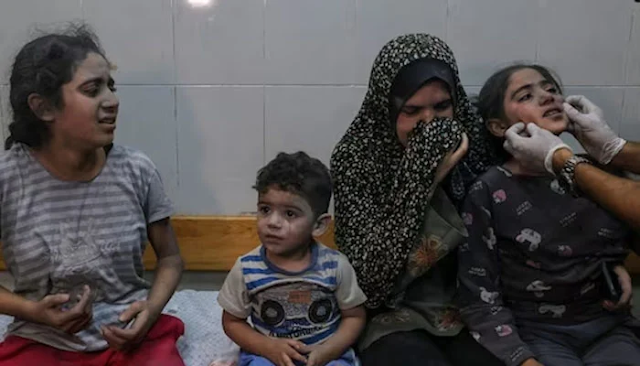Israel-Hamas Urban Warfare Erupts After Gaza Hit by 300 Strikes in 24 Hours
In a devastating turn of events, the ongoing conflict between Israel and Hamas has escalated into a brutal urban warfare scenario, with Gaza bearing the brunt of more than 300 Israeli airstrikes within a 24-hour period. The resulting destruction has left the international community reeling, as casualties and fatalities continue to rise. The Gaza Health Ministry reported on Monday that Israeli airstrikes have killed at least 5,087 Palestinians, including 2,055 children, since the conflict's eruption.
A Deepening Humanitarian Crisis:
The conflict in Gaza has been marked by recurring cycles of violence, but the recent surge in airstrikes represents one of the deadliest and most destructive episodes in recent history. The toll on human life is staggering, with thousands of innocent civilians, including a significant number of children, tragically losing their lives. The humanitarian crisis in Gaza is deepening as healthcare facilities, infrastructure, and vital services are severely impacted.
The Roots of the Conflict:
The Israel-Hamas conflict has deep-seated historical and geopolitical roots. It is essential to understand that this recent escalation is part of an ongoing struggle between Israel and the Palestinian territories, particularly Hamas-controlled Gaza. Key issues at the heart of the conflict include the status of Jerusalem, Palestinian statehood, and the right of return for Palestinian refugees.
Jerusalem, which holds great religious and symbolic significance for both Israelis and Palestinians, has long been a contentious focal point of the conflict. The status of the city, particularly East Jerusalem, remains a highly contentious issue. Israel's sovereignty over Jerusalem is recognized by some countries, while others believe that the status of the city should be resolved through negotiations and that East Jerusalem could serve as the future capital of a Palestinian state.
Statehood for Palestinians is another fundamental issue. The Palestinian territories, including the West Bank and Gaza Strip, have sought recognition as an independent state. The peace process has faltered over the years, with disputes over territory, borders, and the establishment of a Palestinian state at the core of the conflict.
The right of return is a sensitive and complex issue, referring to the return of Palestinian refugees and their descendants who fled or were displaced during the 1948 Arab-Israeli war. Israel has long resisted the right of return, as it could dramatically alter the demographic makeup of the region.
International Response:
The international community has been quick to respond to the escalating violence. Many countries and organizations have called for an immediate ceasefire and a return to diplomatic negotiations to address the root causes of the conflict. The United Nations has been actively involved in efforts to mediate a resolution, but progress has been challenging due to deep-seated mistrust and a history of failed negotiations.
The Role of Urban Warfare:
Urban warfare presents unique challenges for both military forces and civilians. The densely populated areas of Gaza make it exceptionally difficult to avoid civilian casualties, despite Israel's claims of precision airstrikes. The use of urban areas for military purposes by Hamas further complicates the situation, as it endangers the civilian population and can be used for propaganda purposes by both sides.
The Israel-Hamas urban warfare escalation, fueled by a history of unresolved disputes and longstanding grievances, has resulted in an immense humanitarian crisis. The loss of life, particularly among children, is heart-wrenching, and the destruction is taking a severe toll on Gaza's infrastructure and services. Achieving a lasting peace in the region remains a complex and elusive goal, but international pressure for an immediate ceasefire and a return to diplomatic negotiations is essential to preventing further tragedy and finding a path toward a more stable future.



Comments
Post a Comment